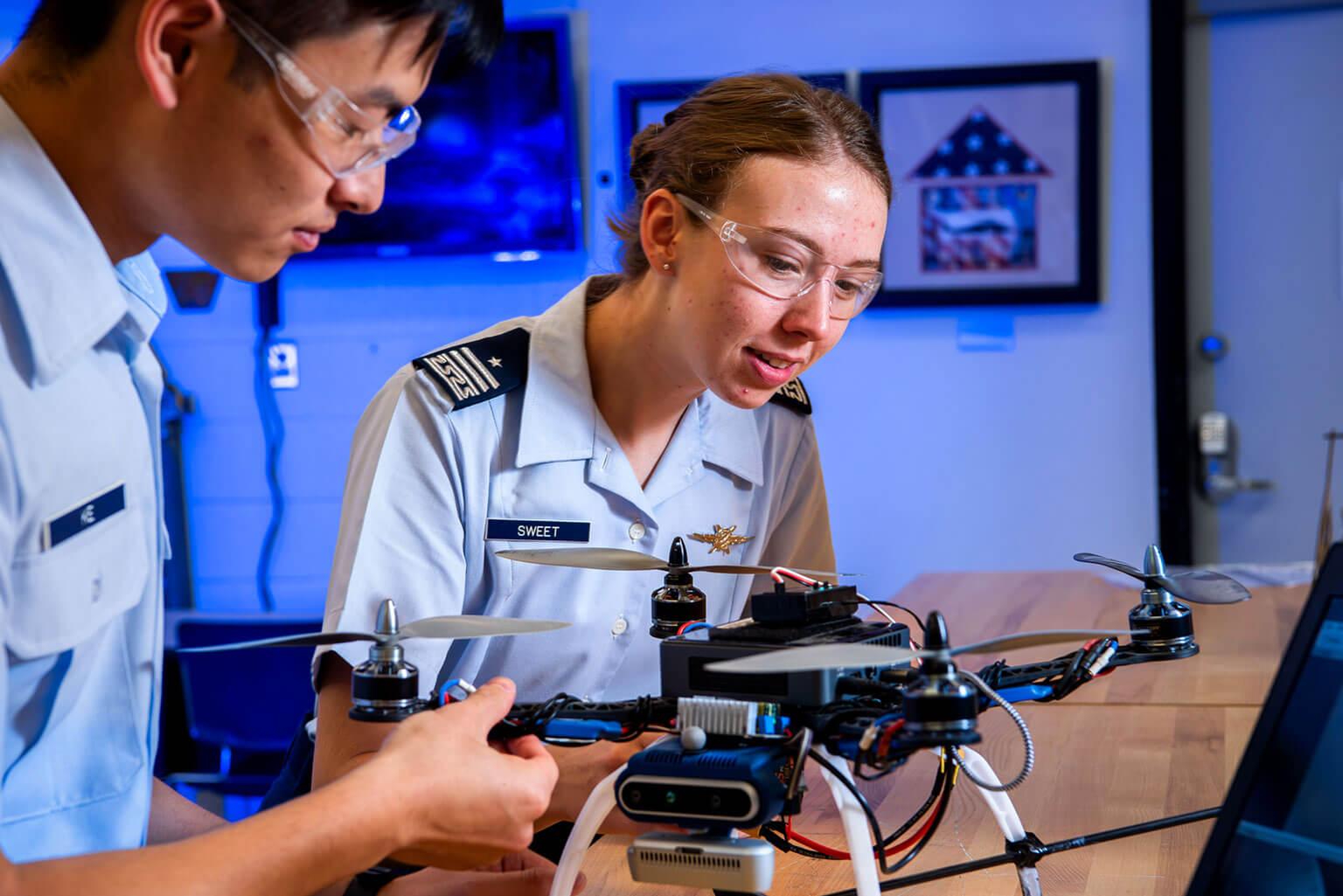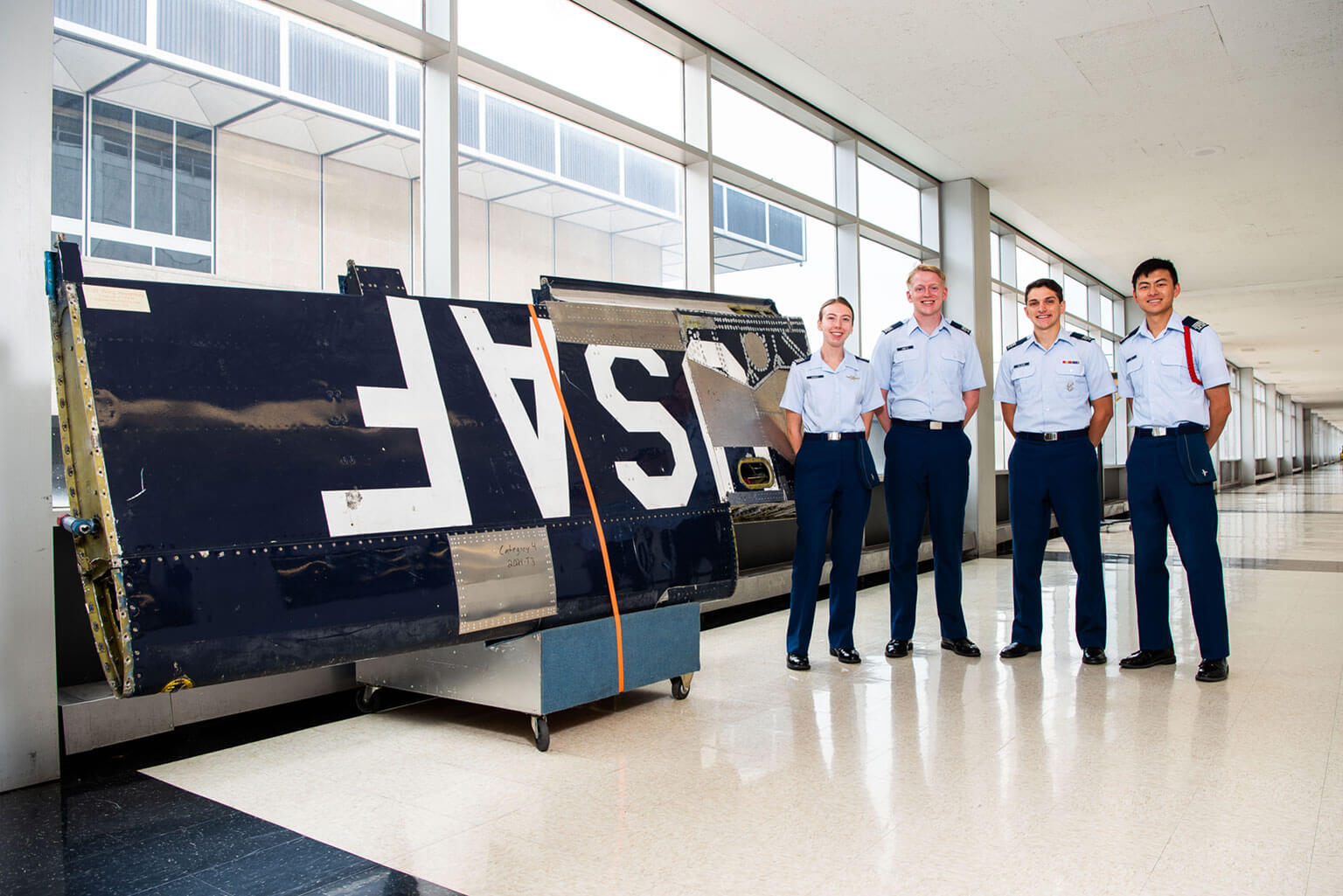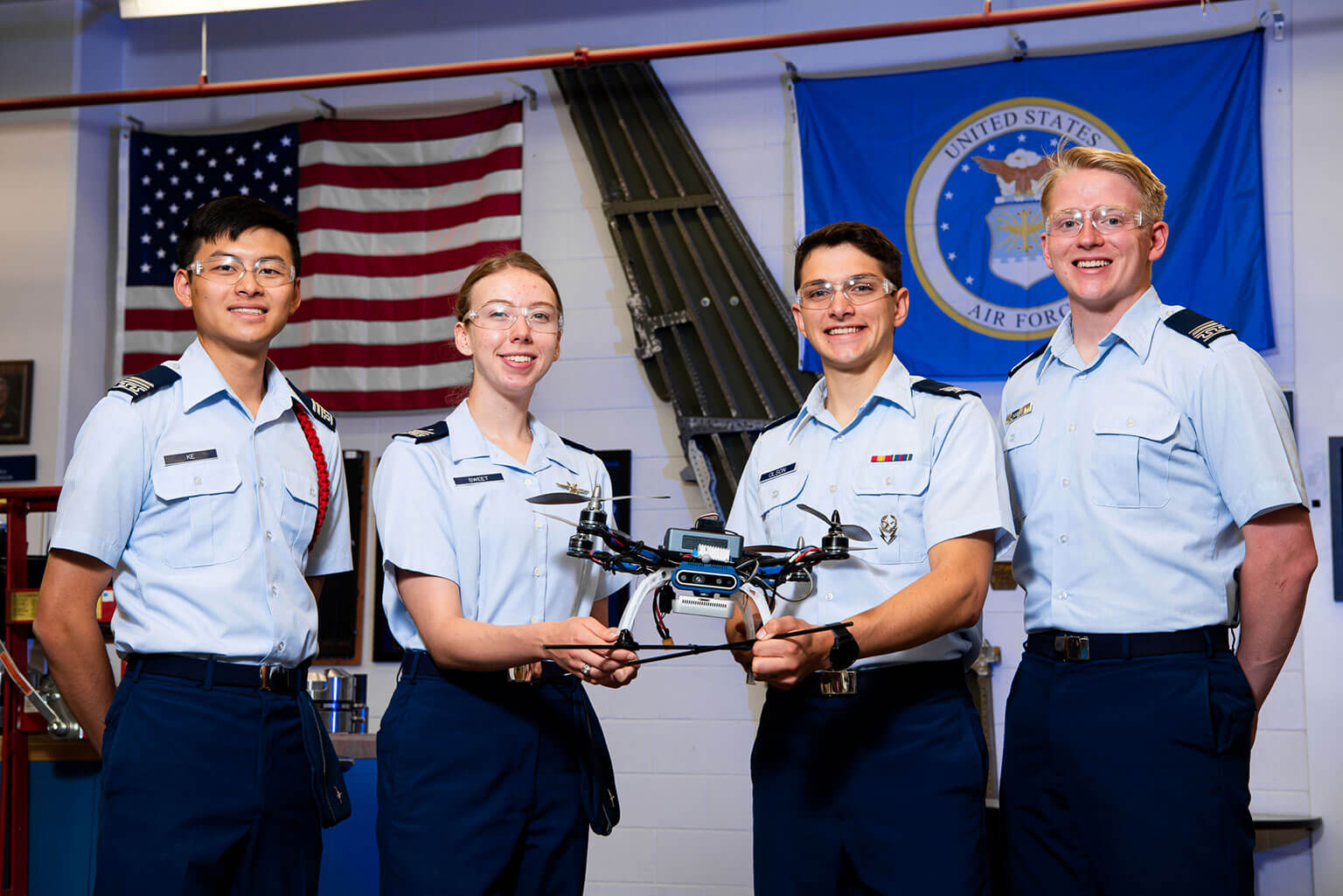Cadet research tackles aircraft battle damage

U.S. Air Force Academy Cadets 1st Class David Ke and Ashlynn Sweet work on their four-person autonomous identification and localization of aircraft battle damage research project in the Center for Aircraft Life Extension Aug. 26, 2024. The cadets located the airplane parts crucial to their research in the CAStLE and Department of Mechanical Engineering labs. (U.S. Air Force photo by Trevor Cokley)
By Randy Roughton
U.S. Air Force Academy Strategic Communications
U.S. AIR FORCE ACADEMY, Colo. – A four-cadet team approaches the conclusion of their research project at the U.S. Air Force Academy. They have been using quad-rotor drones to address autonomous aircraft battle damage identification and localization. If their work is successful, the team’s findings could prove valuable for agile combat employment. Their goal is to deliver a real-time assessment of warfare assets.
“This research has the potential to impact missions, save lives and give the United States and our allies an edge in warfighting domains,” said Cadet 1st Class Elliott Kmetz. “Our idea originated from air battle damage sweeps. Pilots in a two-ship formation with a wingman could sweep underneath and over to look for battle damage while in the aircraft. We thought that leaves room for error. This machine-learning model will autonomously identify that damage and tell the operator where it is on the aircraft to support situational awareness.”
Summer research program paves the way for aircraft damage study
Kmetz, along with fellow Mechanical Engineering majors Cadets 1st Class David Ke and Ashlynn Sweet and Astronautical Engineering major Cadet 1st Class Joseph Olson began their work when they were selected for the Cadet Summer Research Program. The team worked on the aircraft battle damage identification and localization project for the Air Force Research Laboratory Munitions Directorate at the University of Florida Autonomous Vehicles Laboratory.
When the summer research program ended in August, the team presented their findings to their Air Force Research Laboratory sponsors. Each cadet decided to continue the research upon their return to the Academy. They were selected as the Cadet Summer Research Program institution-wide winners.
Mechanical Engineering labs provide aircraft parts for cadet research
The team benefitted from the Mechanical Engineering department’s laboratory and the Center for Aircraft Structural Life Extension. CAStLE’s mission is to extend the life of all U.S. Air Force and Department of Defense weapons systems and train cadets in the science and technology community. The team incorporated the wing of a Cessna T-37 Tweet located in the hall outside the lab in the team’s research. The team safely simulated battle damage on the wing.
“Our project is on aircraft battle damage, and it is difficult to find resources for aircraft damaged in battle,” Kmetz said. “We were fortunate that the Mechanical Engineering lab and CAStLE have airplane parts for us to use in our research. I don’t think anybody else in the world can say that their lab gave them an airplane wing to shoot into.”
The cadets also expressed gratitude to resources in Florida for their summer research project. They gathered data from decommissioned aircraft at Eglin Air Force Base, Florida, that had multiple types of damage from small arms fire to high-caliber ammunition.

U.S. Air Force Academy Cadets 1st Class Ashlynn Sweet, Joseph Olson, Elliott Kmetz and David Ke pose in front of the Cessna T-37 Tweet wing in the Department of Mechanical Engineering Aug. 26, 2024. The cadets located the airplane parts crucial to their research in the Center for Aircraft Life Extension and Department of Mechanical Engineering labs. (U.S. Air Force photo by Trevor Cokley)
Plans for the application of cadet research
The team’s research proved the system can identify aircraft wing damage. They plan to include the metrics from the testing in their conference paper. One improvement the team considers is obtaining a real-world damage structure for training their system. Different materials and types of damage would allow them to improve damage identification.
“The main thing we are considering is how we can apply our research to current and future warfighting systems to reduce the fog of war by using autonomy and machine learning,” Olson said.

U.S. Air Force Academy Cadets 1st Class David Ke, left, Ashlynn Sweet, Elliott Kmetz and Joseph Olson, right, display the drone they use in their aircraft battle damage research in the Department of Mechanical Engineering Aug. 26, 2024. The cadets located the airplane parts crucial to their research in the Center for Aircraft Life Extension and the Department of Mechanical Engineering labs. (U.S. Air Force photo by Trevor Cokley)
The cadets are writing a paper they will present at the 2025 Institute of Electrical and Electronic Engineers Aerospace Conference in Big Sky, Montana, in March.
See more photos of the cadets’ project at Flickr.